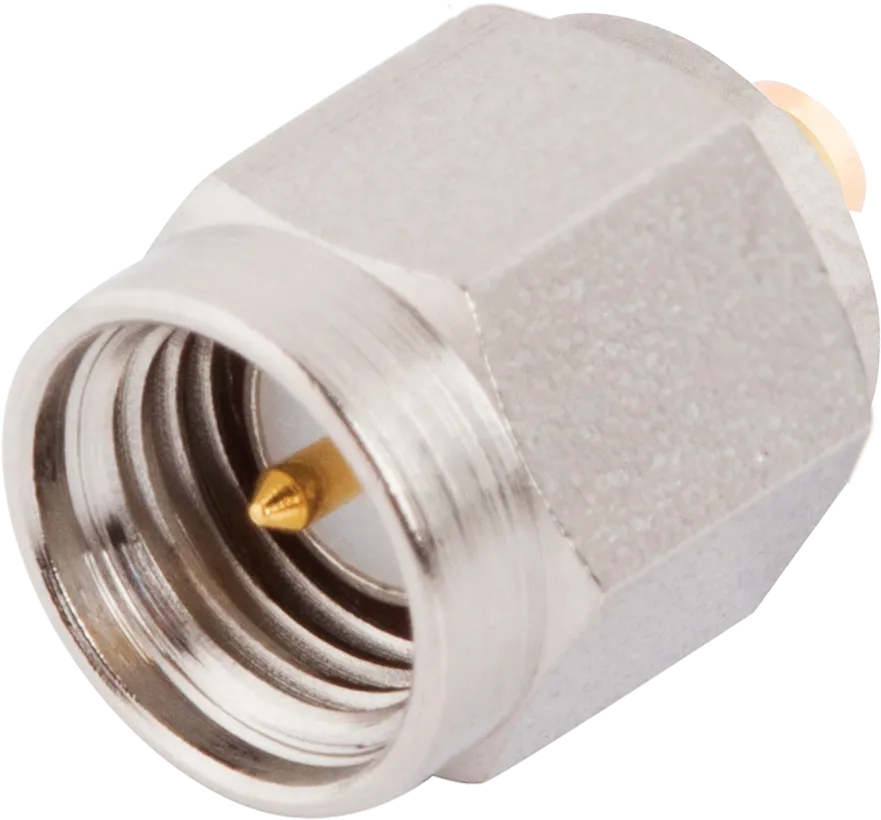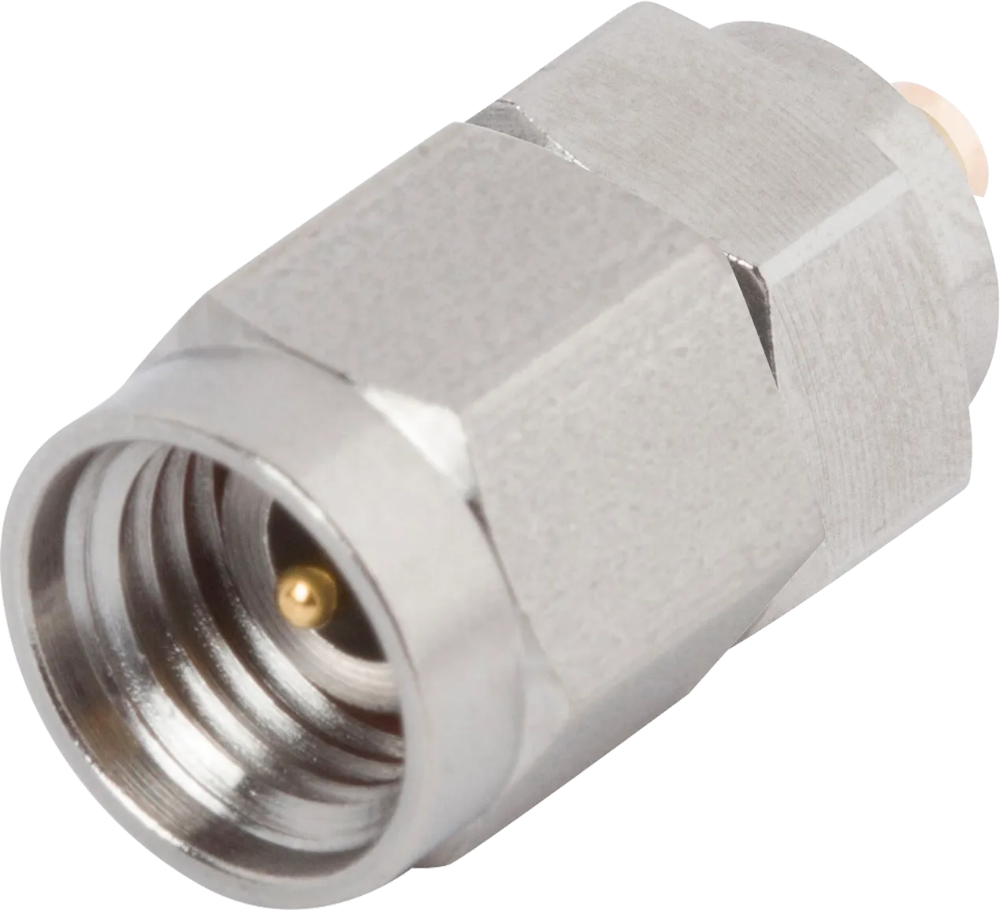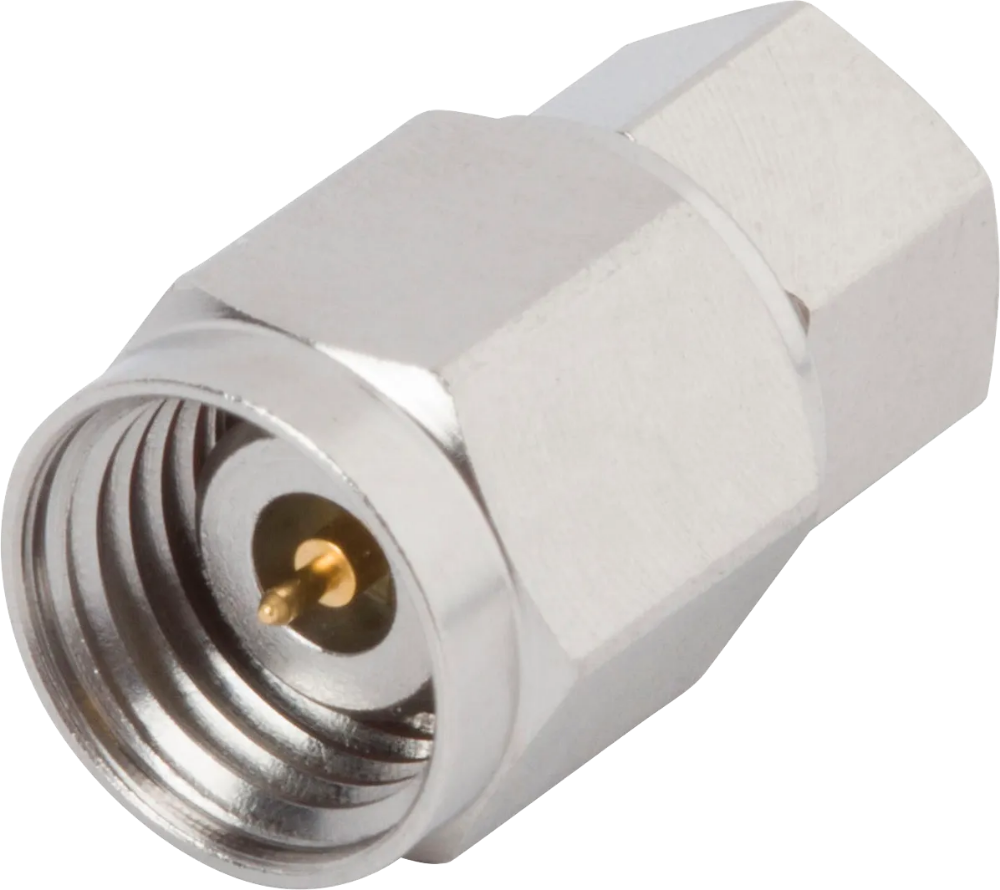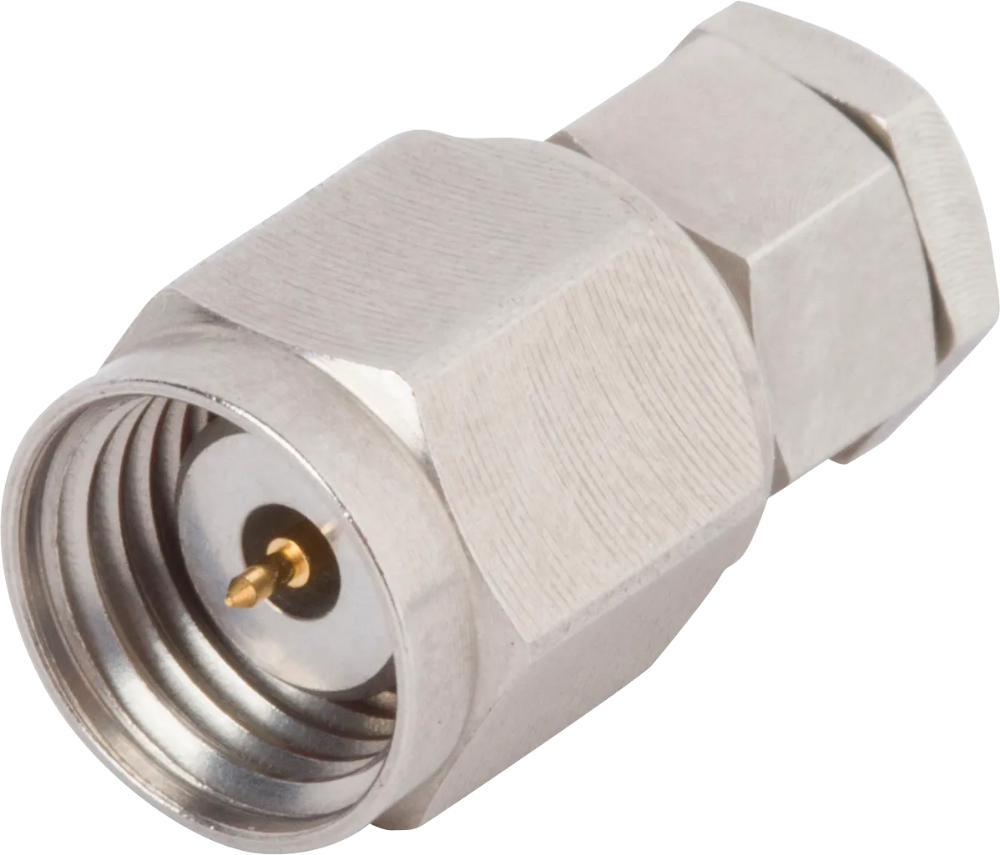Why isn’t SMA part of the mmWave Family?
A question we’ve been asked a lot lately is “What’s the difference between SMA and mmWave interfaces?” And we get it; these interfaces look really similar externally. You have to look down the barrel to even see the difference. So why isn’t SMA part of the mmWave family?
What’s an SMA Interface?

An SMA, or Subminiature Type A, is an RF Coaxial interface that typically operates up to 18 GHz; however, SV offers high-performance options working up to 26.5 GHz. Using a threaded interface, SMAs are compact and have outstanding mechanical durability. Since they are built in accordance with MIL-PRF-39012 and CECC 22110/111, they can be mated with all connectors that meet these spec mating diameters, regardless of manufacturer.
What are mmWave Interfaces?
MmWave, or Millimeter Wave, is a group of interfaces. These include the following:
- 3.5mm
- 2.92mm
- 2.4mm
- 1.85mm
- 1.0mm
These are higher-frequency interconnects that can operate up to and over 110 GHz. While we use all these interfaces at SV, we offer COTS versions of 2.92mm, 2.4mm, 1.85mm and 1.0mm.
2.92mm

The 2.92mm interface was developed for use up to 40 GHz. This interface has a few specific differences from the SMA and other mmWave interfaces, specifically 3.5mm. Its male pin is shorter to ensure the outer contacts of the male and female connectors engage before the pin and female receptacle do. This way, the pin and socket don’t see excessive wear and mating stresses caused by misalignment, as can happen in SMA or 3.5mm connectors. While this interface also has a thicker wall than a standard SMA, it can still mate with SMA and 3.5mm connectors, as they have the same mechanical mating features.
2.4mm

The 2.4mm interface was developed for use up to 50 GHz. It has a thicker outer wall than the 2.92mm interface and eliminates the fragility seen in SMA and 2.92mm connectors. Its female socket has also been strengthened to ensure reliable mating. Like the 2.92mm, it's designed to engage the outer conductors before the center conductors make contact. This interface is intermatable with the 1.85mm series. Although this interface is not compatible with SMA, 3.5mm, or 2.92mm connectors, SV supplies adapters that allow for easy transitioning between RF series.
1.85mm

The 1.85mm interface was designed for mode-free operation up to 65 GHz. It uses a mostly air-dielectric with a support bead that is set back in the body of the connector to reduce bead interaction in a mated pair. Similar to the 2.92mm and 2.4mm connectors, the body has been designed so that the outer conductors engage before the center conductors make contact. While this interface uses an M7 thread and is only intermatable with the 2.4mm interface, SV supplies between-series adapters that allow for transitions between 1.85mm connectors to SMA and 2.92mm connectors.
The Main Differences
The biggest difference between mmWaves and SMA interfaces is the dielectric. While SMA has a PTFE dielectric, mmWaves typically use a mostly air-dielectric with a support bead or hard plastic for captivation, as discussed for 1.85mm.
This air-line dielectric in the mmWave interfaces is capable of supporting a higher frequency than the PTFE.
So, the simple answer to why SMAs aren’t part of the mmWave family is their frequency ranges. These interfaces do the same jobs at different frequencies. In fact, mmWave generally refers to 30-300 GHz, and SMA falls below that frequency range. While SMAs are commodity items and can be used in any RF application, mmWaves will be used in higher-frequency environments and applications, such as test and measurement or any high-frequency application.
Some mmWaves have specific differences from SMA interfaces, such as the 2.4mm interface's even thicker wall than the SMA and the 2.92mm interface. But the largest difference is the frequency range.
recent releases
Why isn’t SMA part of the mmWave Family?
A question we’ve been asked a lot lately is “What’s the difference between SMA and mmWave interfaces?” And we get it; these interfaces look really similar externally. You have to look down the barrel to even see the difference. So why isn’t SMA part of the mmWave family?
What’s an SMA Interface?

An SMA, or Subminiature Type A, is an RF Coaxial interface that typically operates up to 18 GHz; however, SV offers high-performance options working up to 26.5 GHz. Using a threaded interface, SMAs are compact and have outstanding mechanical durability. Since they are built in accordance with MIL-PRF-39012 and CECC 22110/111, they can be mated with all connectors that meet these spec mating diameters, regardless of manufacturer.
What are mmWave Interfaces?
MmWave, or Millimeter Wave, is a group of interfaces. These include the following:
- 3.5mm
- 2.92mm
- 2.4mm
- 1.85mm
- 1.0mm
These are higher-frequency interconnects that can operate up to and over 110 GHz. While we use all these interfaces at SV, we offer COTS versions of 2.92mm, 2.4mm, 1.85mm and 1.0mm.
2.92mm

The 2.92mm interface was developed for use up to 40 GHz. This interface has a few specific differences from the SMA and other mmWave interfaces, specifically 3.5mm. Its male pin is shorter to ensure the outer contacts of the male and female connectors engage before the pin and female receptacle do. This way, the pin and socket don’t see excessive wear and mating stresses caused by misalignment, as can happen in SMA or 3.5mm connectors. While this interface also has a thicker wall than a standard SMA, it can still mate with SMA and 3.5mm connectors, as they have the same mechanical mating features.
2.4mm

The 2.4mm interface was developed for use up to 50 GHz. It has a thicker outer wall than the 2.92mm interface and eliminates the fragility seen in SMA and 2.92mm connectors. Its female socket has also been strengthened to ensure reliable mating. Like the 2.92mm, it's designed to engage the outer conductors before the center conductors make contact. This interface is intermatable with the 1.85mm series. Although this interface is not compatible with SMA, 3.5mm, or 2.92mm connectors, SV supplies adapters that allow for easy transitioning between RF series.
1.85mm

The 1.85mm interface was designed for mode-free operation up to 65 GHz. It uses a mostly air-dielectric with a support bead that is set back in the body of the connector to reduce bead interaction in a mated pair. Similar to the 2.92mm and 2.4mm connectors, the body has been designed so that the outer conductors engage before the center conductors make contact. While this interface uses an M7 thread and is only intermatable with the 2.4mm interface, SV supplies between-series adapters that allow for transitions between 1.85mm connectors to SMA and 2.92mm connectors.
The Main Differences
The biggest difference between mmWaves and SMA interfaces is the dielectric. While SMA has a PTFE dielectric, mmWaves typically use a mostly air-dielectric with a support bead or hard plastic for captivation, as discussed for 1.85mm.
This air-line dielectric in the mmWave interfaces is capable of supporting a higher frequency than the PTFE.
So, the simple answer to why SMAs aren’t part of the mmWave family is their frequency ranges. These interfaces do the same jobs at different frequencies. In fact, mmWave generally refers to 30-300 GHz, and SMA falls below that frequency range. While SMAs are commodity items and can be used in any RF application, mmWaves will be used in higher-frequency environments and applications, such as test and measurement or any high-frequency application.
Some mmWaves have specific differences from SMA interfaces, such as the 2.4mm interface's even thicker wall than the SMA and the 2.92mm interface. But the largest difference is the frequency range.






